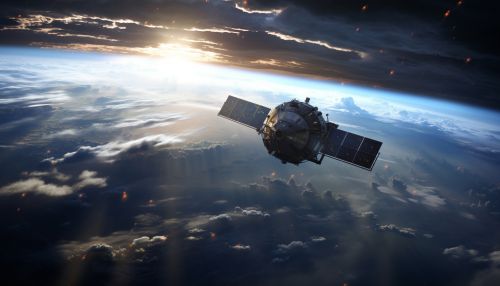Weather satellites
Introduction
Weather satellites are a type of satellite that are primarily used to monitor the Earth's weather and climate. These satellites, which are a crucial part of modern meteorology, provide data about different aspects of the weather, including temperature, humidity, wind speed, and precipitation.
History
The history of weather satellites dates back to the mid-20th century. The first weather satellite, TIROS-1, was launched by the United States in 1960. This marked a significant milestone in meteorology, as it allowed for the continuous monitoring of the Earth's weather patterns from space.
Types of Weather Satellites
There are two main types of weather satellites: geostationary satellites and polar orbiting satellites.
Geostationary Satellites
Geostationary satellites, also known as geosynchronous satellites, orbit the Earth at the same rate as the Earth's rotation. This means that they remain in the same position relative to the Earth's surface, allowing them to continuously monitor the same area.


Polar Orbiting Satellites
Polar orbiting satellites, on the other hand, orbit the Earth from pole to pole. As the Earth rotates, these satellites are able to scan the entire surface of the planet, providing global weather coverage.
Data Collection
Weather satellites collect data through a variety of instruments and sensors. These include radiometers, spectrometers, and imaging instruments, which measure different aspects of the Earth's atmosphere and surface.
Radiometers
radiometers measure the intensity of radiation, including both visible light and infrared radiation. This data can be used to determine the temperature and humidity of the Earth's atmosphere.
Spectrometers
Spectrometers measure the spectrum of light, which can provide information about the composition of the Earth's atmosphere.
Imaging Instruments
Imaging instruments capture images of the Earth's surface and atmosphere. These images can be used to monitor weather patterns, such as the development of storms and hurricanes.
Applications
The data collected by weather satellites has a wide range of applications. It is used in weather forecasting, climate research, and environmental monitoring.
Weather Forecasting
In weather forecasting, satellite data is used to monitor current weather conditions and predict future weather patterns. This includes tracking storms, hurricanes, and other severe weather events.
Climate Research
In climate research, satellite data is used to study long-term trends in the Earth's climate. This includes monitoring changes in temperature, precipitation, and sea level.
Environmental Monitoring
In environmental monitoring, satellite data is used to track changes in the Earth's environment. This includes monitoring deforestation, desertification, and the melting of polar ice caps.
Future Developments
The field of weather satellite technology is constantly evolving, with new satellites being launched and new technologies being developed. Future developments in this field are likely to include improvements in data accuracy, increased global coverage, and the development of new instruments and sensors.
